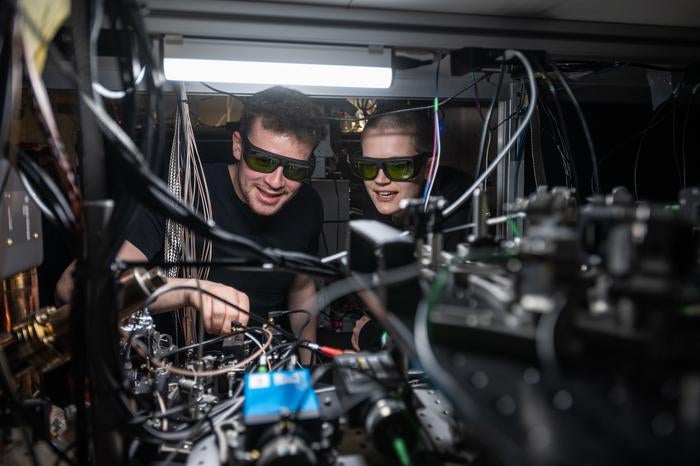A major milestone in quantum computing has been achieved after researchers at the University of Oxford built a scalable quantum supercomputer capable of quantum teleportation.
The breakthrough centres on the so-called scalability problem of quantum computing, with the researchers claiming it will allow the next-generation technology to be realised on an industry-disrupting level.
The field of quantum computing has been around for decades, but only in recent years have significant advances been made towards realising them on a practical scale.
Utilising the properties of quantum physics, these next-generation machines replace traditional bits – the ‘ones’ and ‘zeros’ used to store and transfer digital information – with quantum bits (qubits), which can act as a one and a zero at the same time through a phenomena known as superposition.
This give quantum computers the potential to be orders of magnitude more powerful than today’s state-of-the-art supercomputers that use conventional computing technology.
It is not the first time that scientists have achieved quantum teleportation, with teams previously transferring data from one location to another without moving qubits. However it is the first demonstration of quantum teleportation of logical gates – the minimum components of an algorithm – across a network link.
The researchers claim the quantum teleportation technique could form the foundation for a future ‘quantum internet’, which would offer an ultra-secure network for communications, computation and sensing.
“Previous demonstrations of quantum teleportation have focused on transferring quantum states between physically separated systems,” said Dougal Main, from the Department of Physics at the University of Oxford, who led the study.
“In our study, we use quantum teleportation to create interactions between these distant systems. By carefully tailoring these interactions, we can perform logical quantum gates – the fundamental operations of quantum computing – between qubits housed in separate quantum computers.
“This breakthrough enables us to effectively ‘wire together’ distinct quantum processors into a single, fully-connected quantum computer.”

The researchers also showed that the quantum system could be built and scaled using technology that is already available.
“Our experiment demonstrates that network-distributed quantum information processing is feasible with current technology,” said Professor David Lucas, a principal investigator of the research team and lead scientist at the UK Quantum Computing and Simulation Hub.
“Scaling up quantum computers remains a formidable technical challenge that will likely require new physics insights as well as intensive engineering effort over the coming years.”
The findings were published in the journal Nature, in a study titled ‘Distributed quantum computing across an optical network link’.


